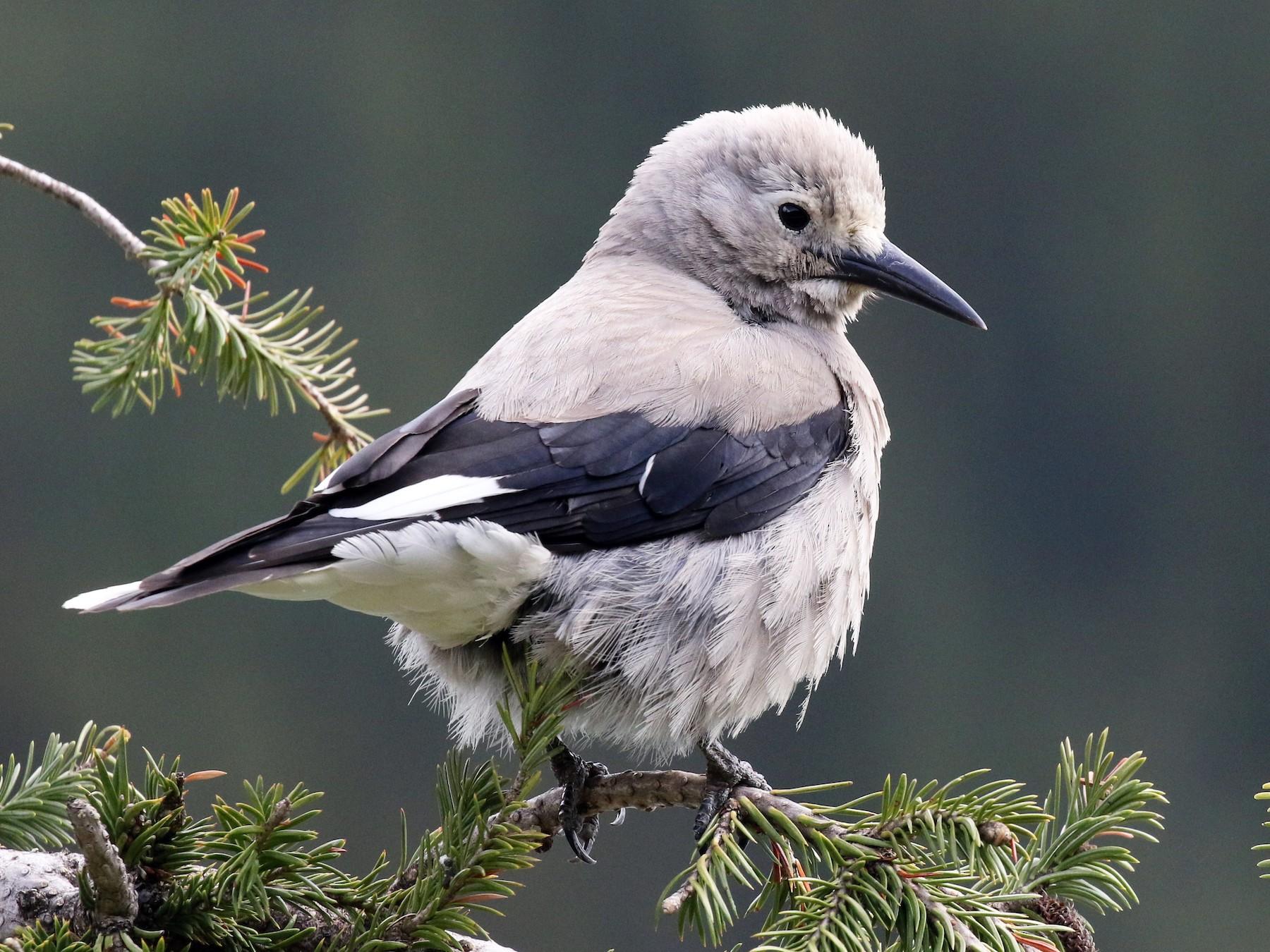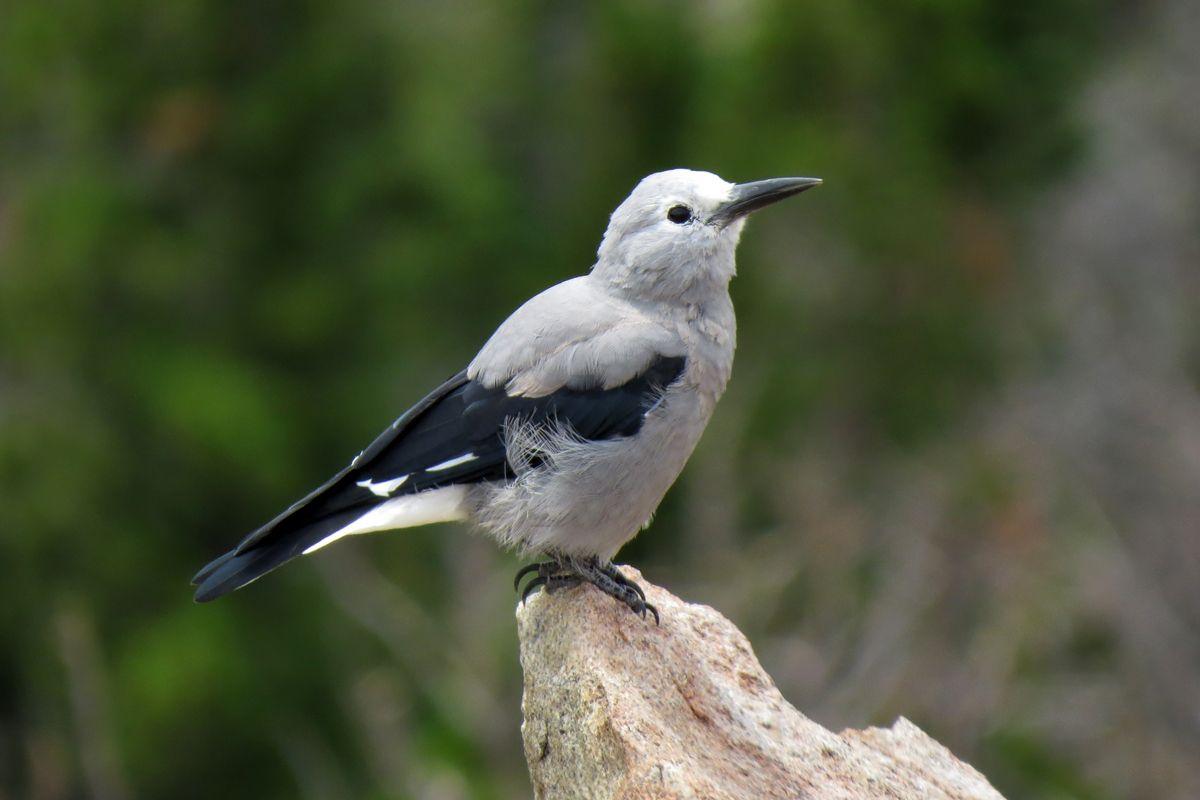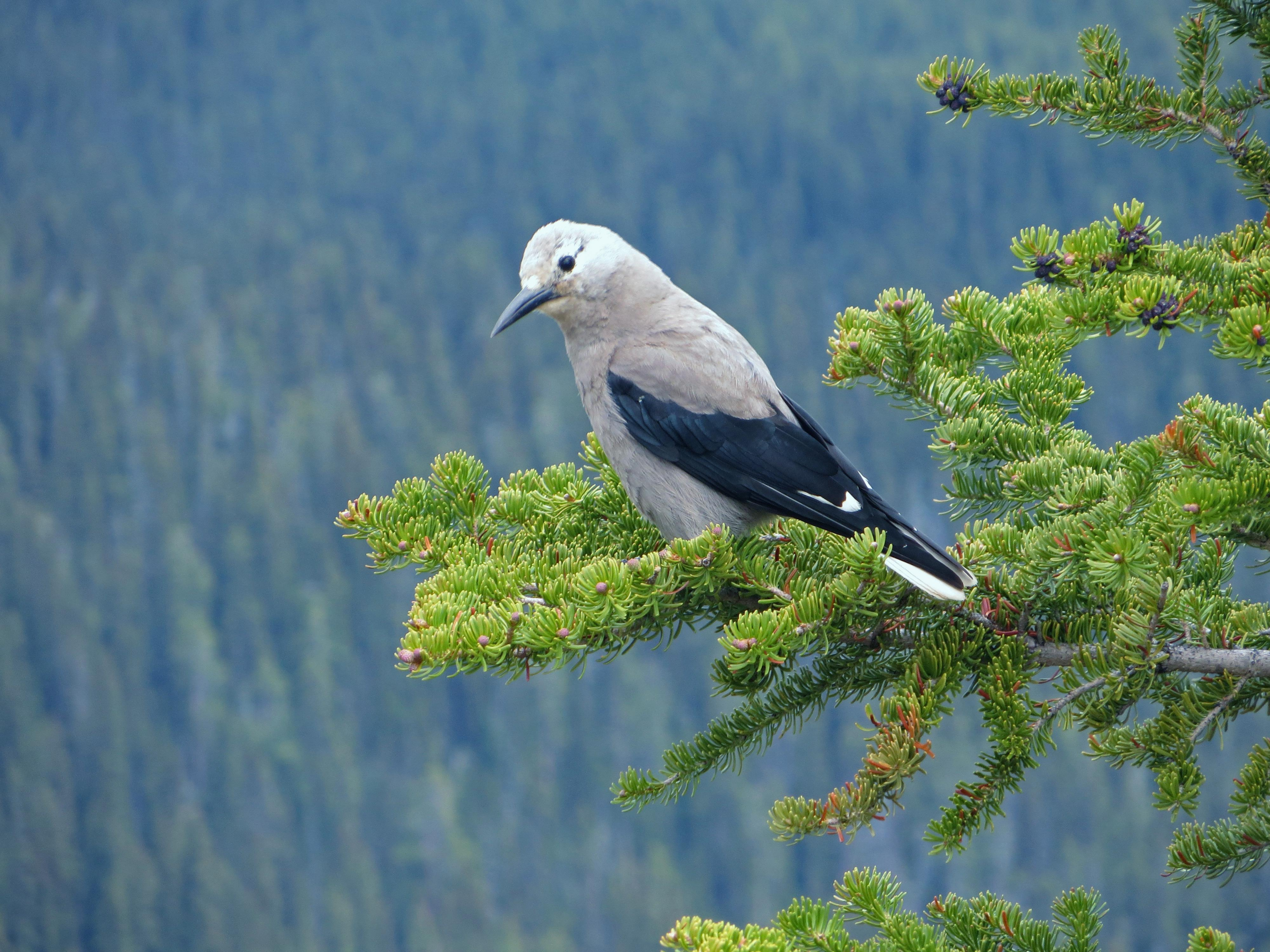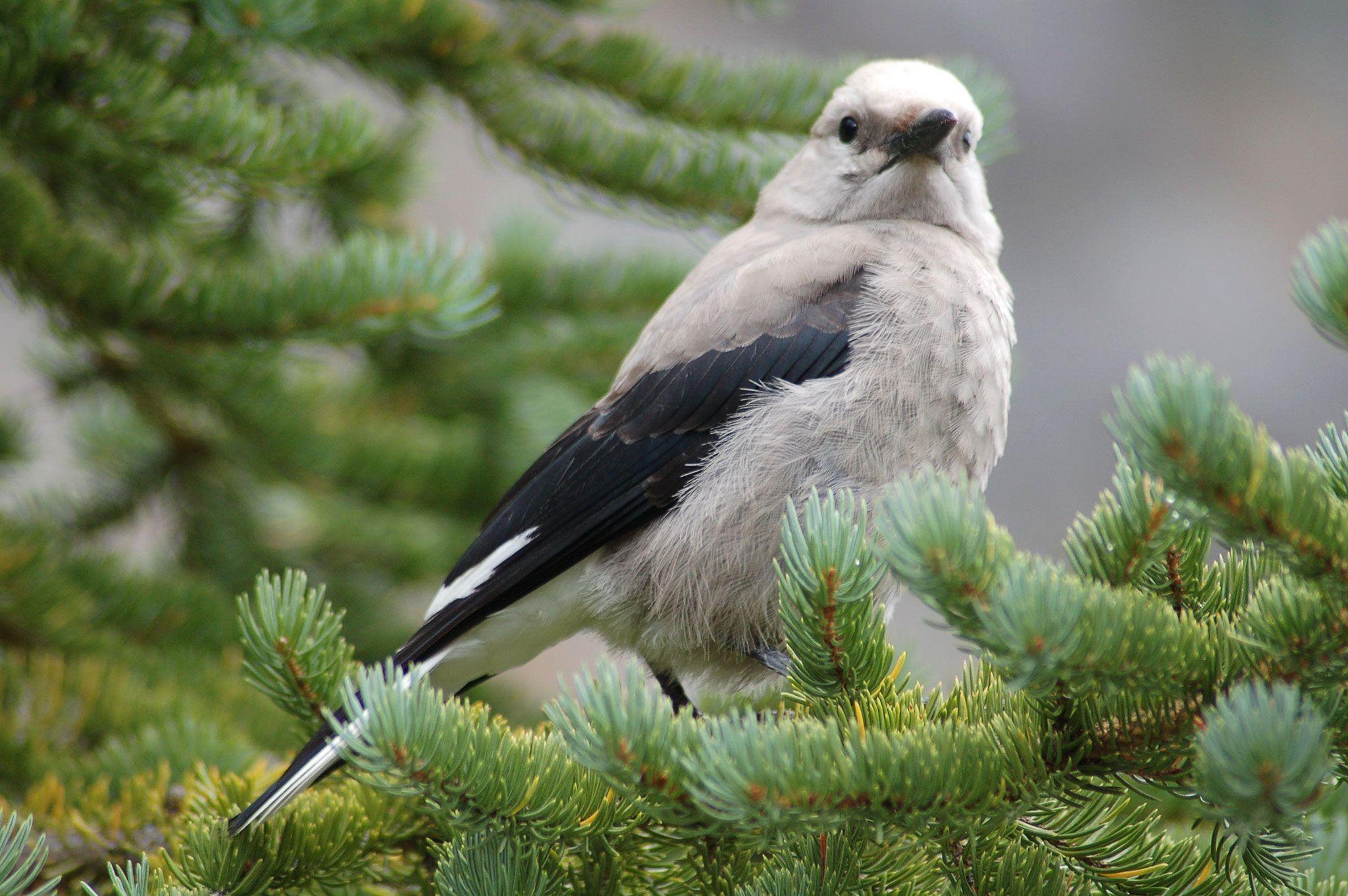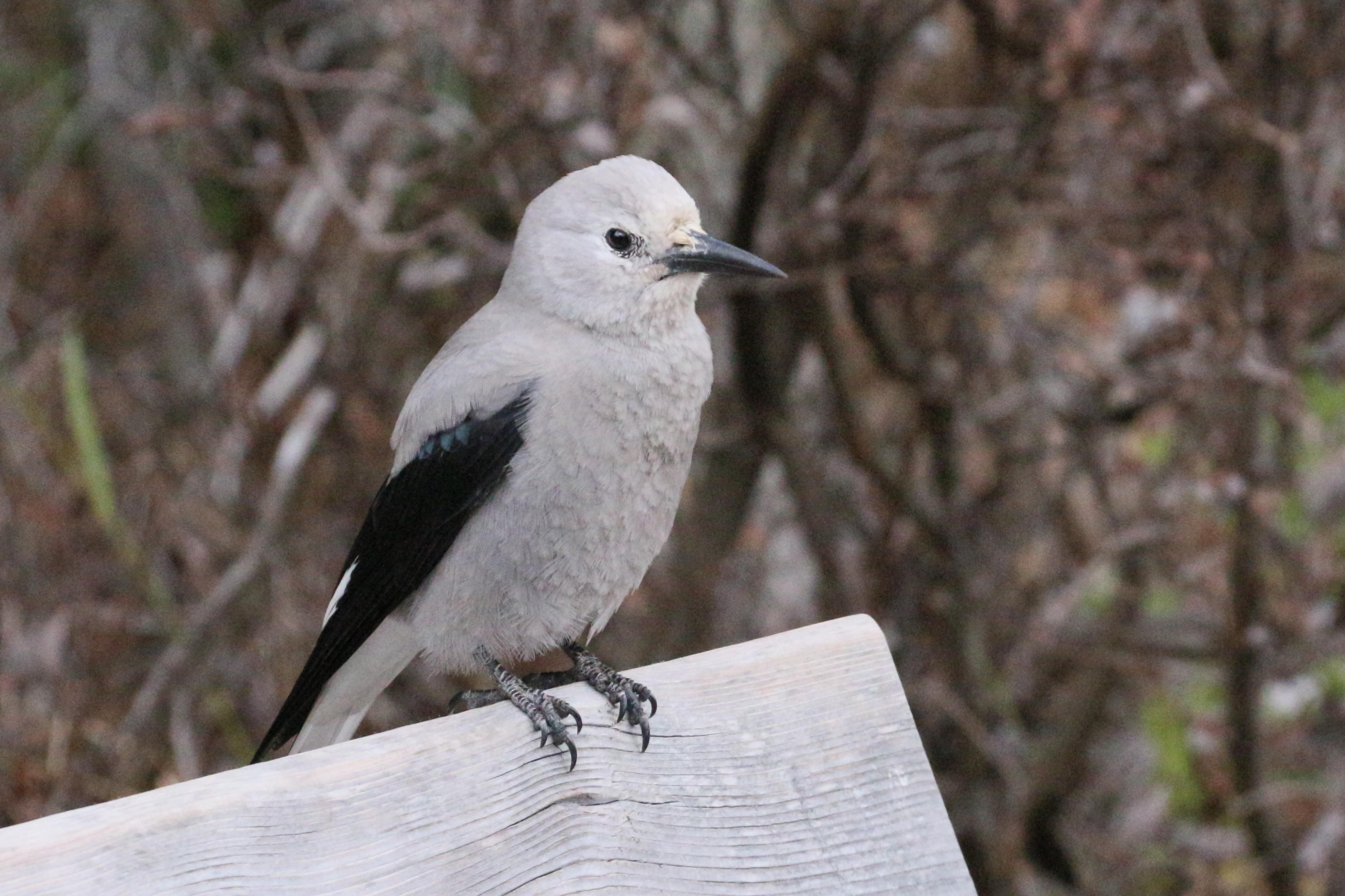In the vast landscapes of the high mountain forests of North America there exists a remarkable species of bird known for its unique and obsessive relationship with seeds: the Clark’s Nutcracker. This extraordinary bird, scientifically called Nucifraga columbiana, has evolved to play a vital role in the ecosystem and has developed fascinating behaviors that make it a true wonder of the natural world.
Clark’s Nutcrackers inhabit the rugged, remote mountainous regions of western North America, with a range extending from the southwestern United States through the Rocky Mountains and into the western provinces of Canada. These birds thrive in high-altitude coniferous forests, where they have adapted to the challenging alpine environment.
Clark’s nutcrackers are medium-sized birds, approximately 11 to 12 inches (28 to 30 centimeters) long. Its plumage is predominantly gray, with striking black wings and tails. One of its most distinctive features is a sharp, pointed beak that is perfectly suited to its seed-centric lifestyle.
What really sets Clark’s Nutcrackers apart is their incredible obsession with seeds, especially pine cones. They have a specialized pouch under their tongue that allows them to collect and transport seeds over long distances. With an amazing memory, they store thousands of seeds during late summer and fall, hiding them in a variety of locations throughout their extensive territory.
These caches serve as their winter food supply, and nutcrackers are famous for their ability to remember the location of each individual seed cache. This extraordinary memory helps them survive during the harsh winter months when food is scarce.
Clark’s nutcrackers are vital to the survival of certain tree species in their habitat, such as whitebark pine and limber pine. By caching and sometimes forgetting seeds, they inadvertently plant new trees, contributing to forest regeneration. Their role as seed dispersers has a profound impact on ecosystem health and biodiversity.
These birds are not only equipped with a remarkable memory, but also exhibit high levels of problem-solving intelligence. Their ability to locate seeds hidden even beneath layers of snow is a testament to their adaptability and ingenuity.
While Clark’s Nutcrackers are not currently listed as endangered or threatened, they face potential challenges due to climate change, habitat loss, and the decline of certain pine species. Conservation efforts are essential to ensure the continued survival of this extraordinary bird and the ecosystems it supports.
In conclusion, Clark’s Nutcracker is a captivating and essential component of North American mountain ecosystems. Their intricate relationship with seeds, their extraordinary memory and their role as forest gardeners make them a truly fascinating bird species worth celebrating and protecting.
